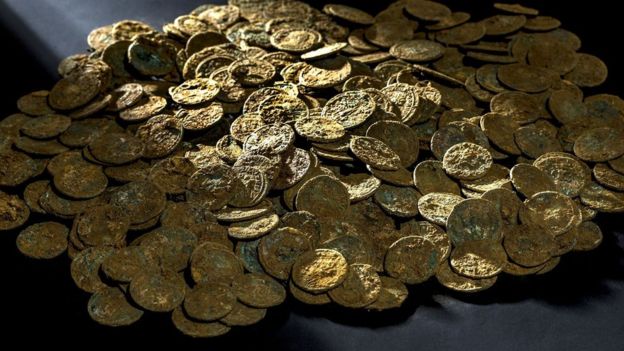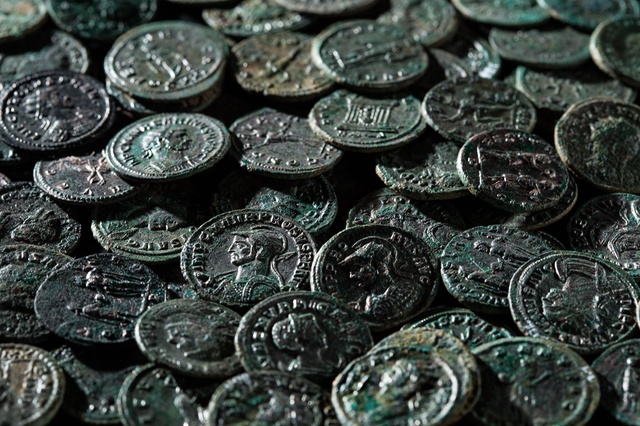Farmer discovers a huge hoard of more than 4,000 ancient Roman coins in Switzerland
One of the largest treasures of that type found in Switzerland was a hoard with over 4,000 bronze and silver coins dating back to ancient Rome, unearthed in the orchard by a fruit and vegetable farmer.

Several months ago, a Swiss farmer found the old coins in Ueken, a town in northwest Switzerland. He mistakenly planted them when his cherry trees were examined.
He then contacted local archaeological experts, who confirmed the presence of a collection of more than 4,000 bronze and silver Roman coins.
Large troves of Roman coins are often found in Britain. In 2009, a collection of nearly 60,000 rust-worn coins, known as the Frome Hoard, was found in a field in Somerset in 2009.
This Swiss collection is also one of the largest ever found outside of the UK, which makes it very special.
The discovery also coincides with a renewed global interest in Rome and Roman history, prompted by the discovery of an intact tomb at the archaeological site of Pompeii in October.
Archaeologists explain that the reason why Roman coins are typically found buried in large quantities maybe because they were offered as a ritual gift to the Roman gods.
This was the case for the Frome Hoard, but although the majority of the Swiss coins have been excavated, no definite answers for their original purpose have yet been hypothesized.
Archaeologists have determined that their owner systematically buried them between 270 and 294 AD, and never came back to recover them.
The coins were taken out of circulation shortly after they were issued, but the archaeologists estimate that they have been worth between one to two years’ wages at the time. The coins, made of bronze and silver components, have been remarkably well-preserved in the soil.

“The owner must have deliberately chosen these coins in order to hoard them,” Swiss coin expert Hugo Doppler explained to the Swiss Broadcasting Corporation. “Their silver content would have guaranteed certain value conservation in a time of economic uncertainty.”
Swiss archaeologist Georg Matter was thrilled by the discovery.
“As an archaeologist, one hardly experiences something like this more than once in one’s career,” he told Spiegel Online.
As exciting as the discovery is, though, the Swiss farmer who first discovered the coins won’t be able to keep his find.





